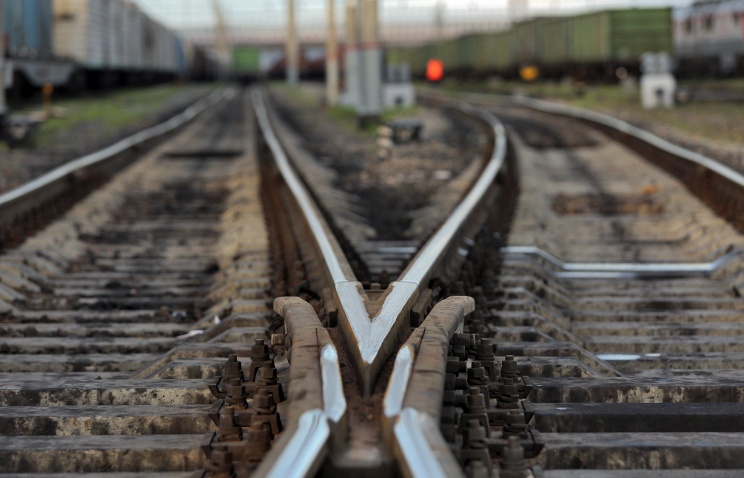
Russia to Shift Rail Route to Avoid Going Through Ukraine
Publication: Eurasia Daily Monitor Volume: 11 Issue: 211
By:

Russia frequently seeks to reroute oil and gas pipelines and railway routes in order to bypass those neighboring countries that it hopes to put pressure on. In turn, the West puts forth competing pipeline and transit corridors whose aim is to allow these same countries to escape Moscow’s sphere of influence. However, another type of rerouting currently taking place—involving both Russia and its neighbors—has largely escaped everyone’s attention, even though its implications could prove to be particularly transformative for the region.
That rerouting involves the sorting out—or, to put it another way, the overcoming—of Soviet-era infrastructure arrangements. Within the Russian Federation and, to a lesser extent, other neighboring countries, this has meant a shift away from the spoke-like network of transportation and communication links extending outward from Moscow or from other major regional hubs. In its place, the regional countries are starting to design and build new transportation maps, which are less Moscow– or oblast capital–centered and, therefore, more in accord with economic rather than purely political considerations.
Yet, Russia and its neighbors are additionally dealing with another problem. For pipelines, railways, and major road ways, the Soviet government generally ignored the administrative borders between union and autonomous republics and, instead, laid these infrastructure lines across republic borders. This approach had obvious topographic and financial justifications, but it also served as a means to hold these republics inside the grip of the Soviet center. Now, nearly a quarter-century after the collapse of the Soviet Union, this system too is beginning to break down. Indeed, many in Moscow and the republic capitals recognize that the current international borders are gaining in importance, however much Vladimir Putin would like to abolish them and reverse “the greatest geopolitical tragedy of the 20th century”—that is, the demise of the Union of Soviet Socialist Republics (USSR).
Nevertheless, nowhere have such changes been slower or more difficult—because they are more expensive and, ultimately, more fateful—than in the case of railways. When the USSR disintegrated, the only institution all 12 newly independent republics and the three formerly occupied Baltic States have continued to jointly operate in has been the regulation of railways. On a regular basis, the leaders of the national railways meet to deal with problems that arise in the formerly integrated Soviet railway system. This rail network maintains its broader-than-international-standards track gauge, and its routes sometimes go over and back across the borders of now independent countries.
But that system is beginning to break down as well. At the end of last week, Vladimir Yakunin, the head of Russian Railways, announced that Moscow will build a new, 26-kilometer rail route between two cities in Russia’s Rostov oblast so that trains between them will not have to pass through Ukrainian territory, thus realizing a plan that he said has “always existed” but is being pursued now because of instability in Ukraine. “As soon as we procure the funding,” Yakunin said, “we will begin carrying it out” (TASS, kasparov.ru, November 21).
But funding may be a problem, even for what might seem to many as a rather short correction to this Russian rail route. Yakunin told a meeting in Berlin that “it is difficult to say just how much financing will be required,” but it is certainly going to be enormous and beyond the means of Moscow, given its current budgetary stringencies caused by Western sanctions and Putin’s military buildup. Nonetheless, the Russian Railways head expressed confidence that Moscow would find investors for the 55 billion ruble ($1.2 billion) project and would complete construction within two years, assuming the Russian government could find the funds needed.
According to TASS, Moscow began thinking about the construction of the Prokhorovka-Zhuravka-Chertkovo-Bataysk route in March when there was talk that Ukraine would block Russian trains from running on Ukrainian territory. At that time, Russian Railways Vice President Vadim Morozov said that building this short link would provide “reliable” communication between Moscow and the Russian south (TASS, November 21).
The real question is why did Yakunin make this announcement only now and in Berlin? The simplest and perhaps most reasonable answer is that it took the Russian bureaucracy that long to come up with a plan that it could put in front of investors. In March, his deputy could only provide a range of estimated costs between 40 billion and 60 billion rubles ($1.1–1.9 billion).
But as in all things Russian, there is almost certainly a political dimension as well. On the one hand, Moscow may be trying to send yet another signal to the Europeans that it is prepared to recognize Ukraine’s borders by moving the rail line. And on the other, it may be hoping that the Europeans will help pay for this, convinced, despite Russian shifts in the past, that by doing so they will be contributing to Ukraine’s security and the easing of East-West tensions.




